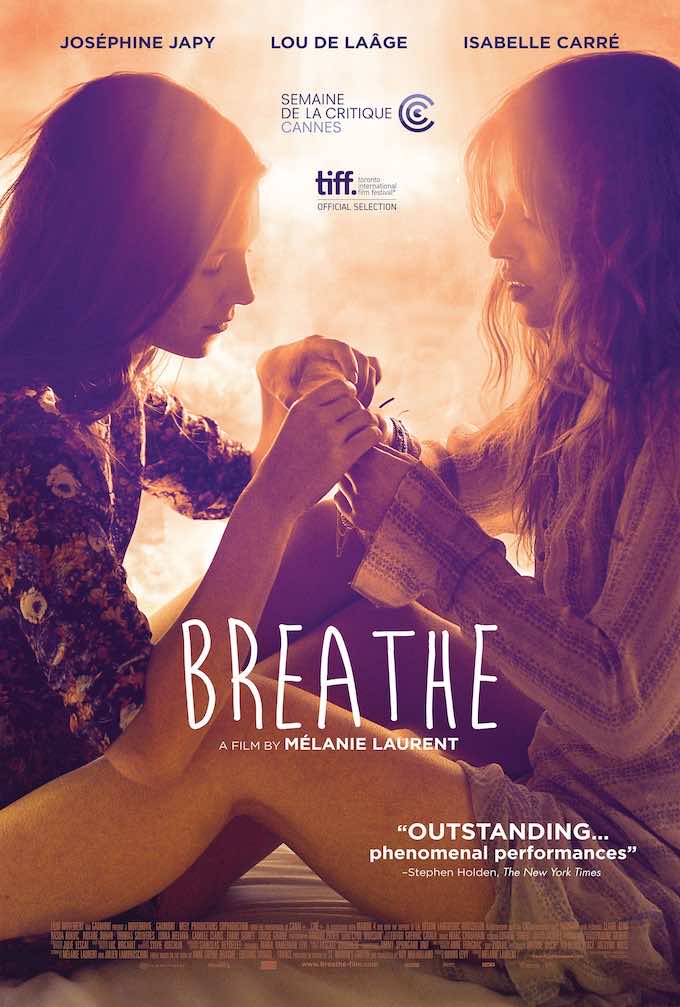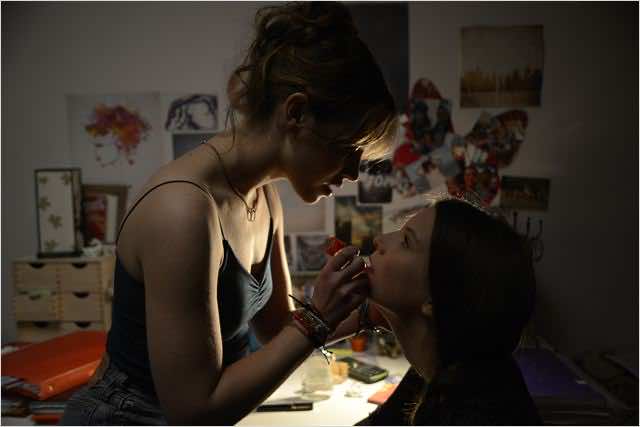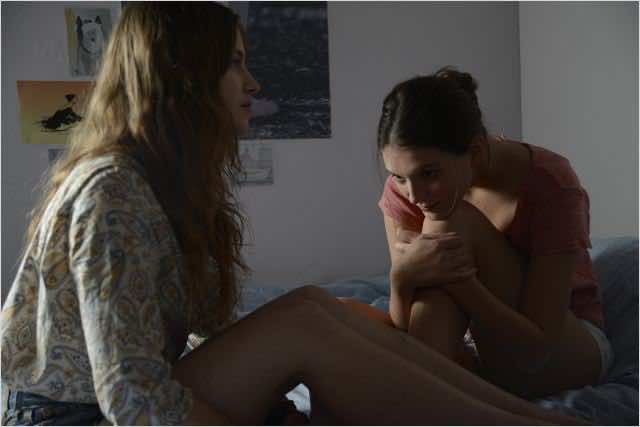 An awakening of female sensuality and passion are at the core of Mélanie Laurent’s second film Breathe (Respire). Rather than exploiting the familiar coming of age narrative, Laurent explores characters that have depth and lets them evolve slowly. Breathe tells the story of Charlie (Joséphine Japy), a seemingly average suburban teenager who lives with her mother. Charlie goes to school where she has a suitor and a small but consistent group of friends and has, for the most part, a quiet life. The one source of tension for Charlie is the on and off relationship her parents have. A child of a very young couple (her mother had her at 18), Charlie witnesses the turmoil between her father, who is not committed to the relationship, and her mother, who loves her father too deeply, even painfully.
An awakening of female sensuality and passion are at the core of Mélanie Laurent’s second film Breathe (Respire). Rather than exploiting the familiar coming of age narrative, Laurent explores characters that have depth and lets them evolve slowly. Breathe tells the story of Charlie (Joséphine Japy), a seemingly average suburban teenager who lives with her mother. Charlie goes to school where she has a suitor and a small but consistent group of friends and has, for the most part, a quiet life. The one source of tension for Charlie is the on and off relationship her parents have. A child of a very young couple (her mother had her at 18), Charlie witnesses the turmoil between her father, who is not committed to the relationship, and her mother, who loves her father too deeply, even painfully.
Charlie’s life is unexpectedly changed when a new girl joins the school. Sarah (Lou de Laâge) is beautiful, confident, filled with energy and appears to have taken to plain Charlie in a special way. The relationship between the two high school girls develops fast and soon Charlie becomes enthralled by Sarah. The two go everywhere together and Sarah gives Charlie her undivided attention, prompting her to find a side of herself she was unaware of. However, Sarah has also inserted herself into Charlie’s life in a pernicious way; jealous of the close bond that Charlie and her mother share, Sarah tries to elicit a close bond with Charlie’s mother. Sara also is aware of who Charlie’s closest friends are, and in a slow but persistent way, she creates a wedge between Charlie and her friends. The relationship goes from a deep friendship into a complicated entangled affair.
When Charlie takes Sarah on a family vacation, the relationship between them deepens. It goes from elated joy and a sort of closeness seldom achieved by best friends to a toxic relationship where Sarah seems to delight in seeing Charlie being hurt, while also drawing her closer in. This sick dynamic culminates when Charlie — jealous and worried — confronts Sarah one late night as she arrives after a night out. Sarah responds by seducing Charlie and passionately kissing her. From this point on, the relationship deepens in macabre ways.
As shy Charlie becomes obsessed with Sarah, her own identity suffers and wanes. She uncovers a secret Charlie has been hiding, and when she approaches Sarah to talk about it, hoping this will make them closer again, Sarah goes into a rage and unleashes a campaign against Charlie. At school, Charlie becomes the object of Sarah’s rage. She is unable to fight back, as she still garners hopes to recoup that lost friendship.
The action centers around different kinds of women, it is not only a coming of age for Charlie, but also an interesting take on her mother, who has been deeply involved in regaining her father for years but throughout the course of the film finds herself renewed. As Simone de Beauvoir once posited, “One is not born but rather becomes a woman,” meaning the lived body, carrying experiences and a unique socioeconomic imprint, an identity gradually acquired.
In Breathe, Charlie is in the process of becoming a woman, that identity partly learned from an example at home and partly due to external stimuli represents the shift in Charlie’s personality. While the end may seem a shocking development, it is also an instance of becoming a woman. The process of evolving and becoming a woman is not a simple or linear trajectory, as Beauvoir reminds us, it is charged with contextual and cultural meaning. In Charlie’s microcosm it is also the result of the lived experience at home, where the one relationship that has molded her persona is ridden with rejection and suffering.
Breathe runs 91 minutes long, is in French with English subtitles and it is not rated (there is adult language, sexuality and violence on an array of levels). It’s now playing in our South Florida area exclusively at the Coral Gables Art Cinema and in Boca Raton at the Living Room Theaters. On Oct. 2, it begins its run at the Miami Beach Cinematheque. For screening dates in other cities, visit this link. All images in this post courtesy of Film Movement, which also provided a DVD screener for the purpose of this review.











